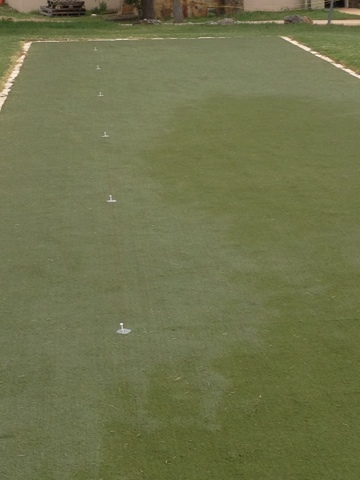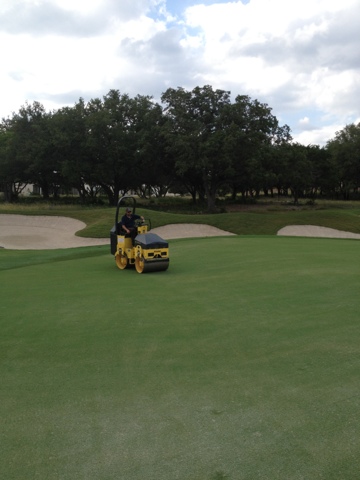Although we had a rough start to the 2012 season we finished the year out very strong and have made great improvement on our weak areas throughout the courses. The extreme drought during the summer of 2011 left the turf very weak going into the winter of that year and it showed in the spring of 2012. This and the addition of underlying greens drainage issues at Cowan Creek lead to a less than stellar transition period coming out of dormancy in the early months of this year. During that period we brought in the USGA and the people from ISTRC to help analyze our problems and give input for measures to be taken not only to correct the problem but also avoid it in the future. Many of the greens with problematic issues in the low areas have been identified and measures have been taken to help alleviate problems in the future. The installations of slot valves and four-ways (to allow air to be blown in the greens) have been installed on a number of these and we will continue to work on this until they have all been addressed. An aggressive Aerification program was also put in place per the USGA’s recommendation and the results have spoken for themselves. The hard work and attention to detail in these areas has shown great improvement over the year and the condition of the Cowan Creek greens are much improved from eight months ago.
Overall conditions of the golf courses also improved over the course of the year and the cultural practices over the past few years are paying off. Fairways, roughs and tees that were once beaten down from cart traffic are starting to grow taller and are healthier due to aerification practices and adjustments to our fertilization and watering of these areas. We also found that some well timed rain from Mother Nature has also helped us out this year and we are much healthier going into the winter this year than last. That being said we have to wait and see what she throws at us next year!
In closing I would also like to mention the fact that most of the achievements and gains we have made this year could not have been possible without the help of the entire CA staff (not just golf staff), the Golf Committee, Golf Ops Sub-Committee, Safety Sub-Committee and the Playability Sub-Committee. Sun City has a lot of moving parts to it and when we (Golf Maint.) are dealing with issues on the golf course it helps us focus on the task at hand when we have such a great support system backing us. Thank you.























_diagram_2.jpg)
_diagram.jpg)




















